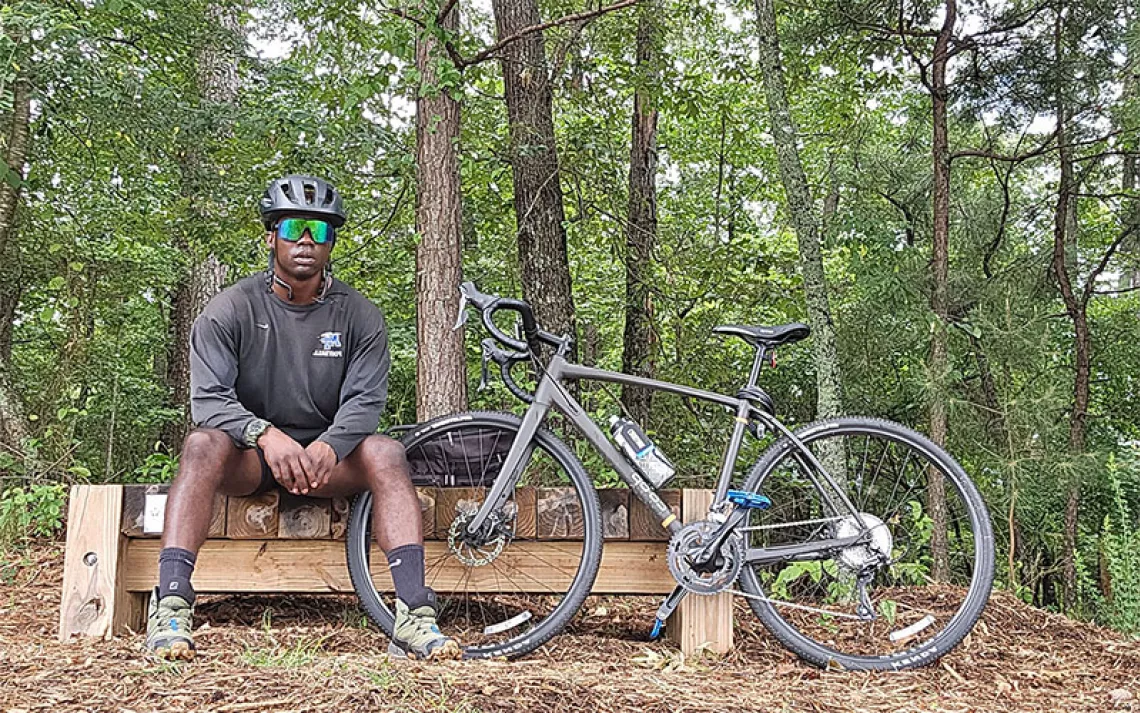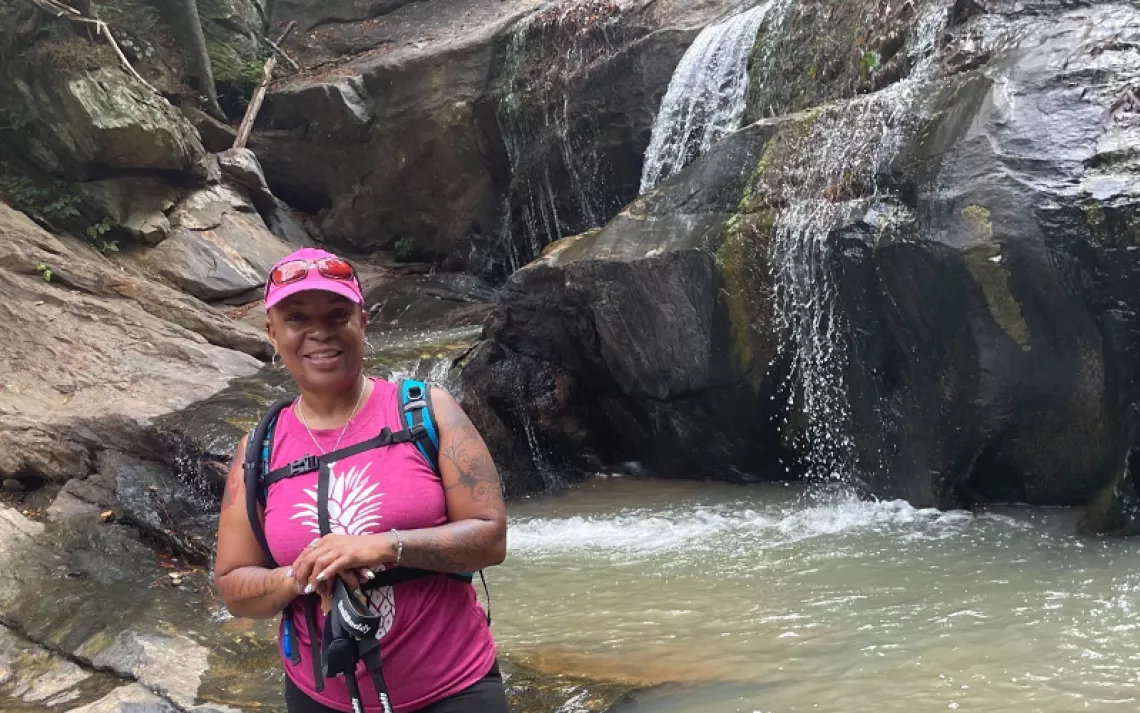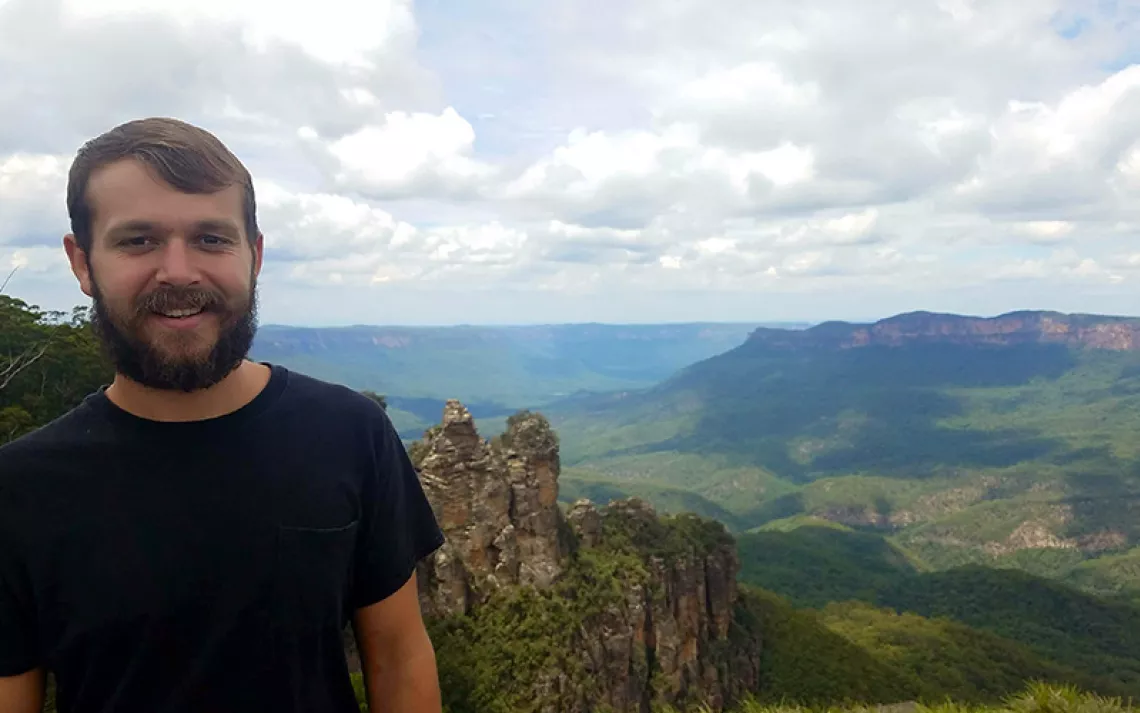One Vet Reveals the Healing Power of Nature and Story
This Veterans Day, let’s help former service members process their experiences

Photos courtesy of Aaron Leonard
I am a father, a partner, a volunteer, an academic, and an environmentalist. I am also a veteran. From the day I enlisted in May 1987 until my retirement in November 2014, I played a role in many military operations around the world. After I left the military, I found that spending time in nature with other veterans was how I would best begin to unpack and reflect on my story in a way that would help to lighten the weight I was carrying. In a sense, each trip into the woods allowed me to reach into my rucksack and pull out a few more rocks, lessening the burden born from years of conflict and witnessing human suffering. Those days spent sleeping under the stars on group backpacking and paddling trips were how I would eventually begin to heal from the traumas of war. The stories I told on those adventures have allowed me to live, and to thrive. This is one of those stories.
On the night of February 26, 1991, I fought in the second-largest tank battle in US history. The Battle of Norfolk was an intense tank-on-tank slug fest in which thousands of US and British soldiers engaged in a deadly fight with thousands of Iraqi soldiers. The battle unfolded in the great Al-Hajarah Desert of Southern Iraq, and in less than 24 hours, 21 US soldiers were killed and 67 wounded. The Iraqi death count is estimated to be more than 1,000—afterward, many of the tanks and armored vehicles they rode into combat remained on the field, turned into burning wrecks.
At 22, I was a very young and largely untested soldier assigned to lead a small ground surveillance team in the 1st Infantry Division. My team’s job was straightforward: locate, identify, and facilitate the destruction of the enemy. We had left Fort Riley and the bone-chilling cold of the Kansas plains in early January 1991, joining a 35-nation coalition formed in the months following Iraq’s invasion of Kuwait. We added our small team to the coalition of nations slowly building power in the Arabian desert, ostensibly defending Saudi Arabia from Iraqi aggression.

On February 15, 12 days before the Battle of Norfolk, my team and the team of my squad mate Sergeant Carl Payne were attached to the 1st Infantry’s Task Force Iron. On February 17, at around 1 A.M., Sergeant Payne and his team were wounded in a friendly fire incident that killed two and wounded six. Thirty-six hours before Norfolk, my team had entered Iraq with Task Force 2-34 Armor, following army engineers that had breached the land mines and bulldozed obstacles on the heavily defended Iraqi border. The morning before Norfolk, my team was again attached to Task Force Iron, having had no rest since the beginning of the ground war 48 hours earlier. We entered into the Battle of Norfolk as night fell the evening of February 26.

Sign up to receive Sierra News & Views
Get articles like this one sent directly to your inbox weekly.
With this action you affirm you want to receive Sierra Club communications and may vote on policy designated by the Sierra Club Board.
My memories of that night remain murky. I believe this is partly due to the enormous labor involved in fighting in a night-time tank battle that stretched from horizon to horizon, partly due to the numbing fatigue brought on by sleep deprivation, and partly due to trauma born from being a witness to, and the cause of, human suffering. But I do remember some of what we saw and did.
For instance, I know that early in the fight, just before the full darkness of night set in, I chose to not kill nine Iraqi soldiers peeking over the edge of a foxhole. I had them in my sights—maybe 100 meters to our front—and my thumbs were resting lightly on the butterfly-shaped trigger of our heavy machine gun, when I thought I’d wait and see what they did next. They chose that exact moment to surrender, hands flying up and weapons cast aside, nine dirty and tired men climbing out from their hole in the desert. Later that night, I remember the feeling of death surrounding us, a sensation that returns from time to time, often triggered by a sound or smell. I remember seeing sparks flying into the night as a US tank next to us was hit by an enemy tank, making almost no discernible noise amongst the surrounding chaos. And I remember the wide-eyed stare from my teammates as we followed a Scout platoon, careful to stay in their tracks to avoid land mines as we weaved our way through burning Iraqi tanks under a thickening cloud of smoke and ash.
When a darkened sun finally rose on the 27th, the landscape revealed itself as pillars of fire from burning oilfields and the scattered remnants of Iraq’s Republican Guard. There was an unnatural darkness, the sky the color of burning coal, and the desert painted with a sticky mud-colored rain that was impossible to escape. Finally, I remember the adrenaline that had been soaring through our veins slowly dissipating as we paused that morning amongst the dead and wounded, perched at the edge of that burning oilfield. I experienced a physical and spiritual exhaustion so deep, it no longer feels real. We still had one more battle to fight before this war would end, when another, much longer and more personal one, would begin.
There are more than 19 million living veterans in the US, each with our own stories. Many are doing well, living a healthy life back home. Many veterans will need help at some point in their lives, and sadly, there are many veterans who need help but never seek it. This is often due to a number of factors that include a lack of social support and lack of trust. The number of veterans who never seek help is unknown, but we all likely know a few.
I myself did not first seek help until very recently—30 years after the sun rose on the Battle of Norfolk, to be precise. Even in writing this piece, I am sharing an experience that I have kept private; only my teammates really know what we saw and did that night, because they were the only two people there.
Veterans touch our lives every day. They are colleagues, friends, neighbors, and exist in every generation of many families. When a servicemember leaves the military and moves into our community, they often struggle to feel like they belong and feel lonely and isolated—often living in a type of hidden conflict between two worlds. Most will do well, but some will experience a type of pain that is difficult for them to explain.
Being a veteran does not equate to a disease or diagnosis; it’s a title we earn, one that many are proud of. Veterans come from every facet of our society; they live in every community, work in every field, break every law, live and die with all of us. Veterans know that at one time in their lives they swore an oath to protect and defend us and the lands we enjoy. They have many stories like mine to share—stories that may be hard to hear at times—but telling those stories can help them process those experiences.
As I celebrate Veterans Day this year, I think of those I was with in Iraq and elsewhere. I have nothing but gratitude and a fondness in my heart for Scott Wiltshire and Mark Helmer, the two men I served with in the Battle of Norfolk. I feel joy in their successes and compassion for their sorrow. This Veterans Day, I will also reflect on the opportunities that I have had because of my time as a soldier. I am deeply grateful to the amazing humans on the Club’s Outdoors for All team, where we have created an opportunity to make real, lasting change in how veterans and their families can harness the outdoors to help heal. I don’t feel like I work here, but rather like I get to live here.
Every time we dismantle a barrier that our veterans face to seeking healing in the outdoors (lack of access, for instance, or lack of representation), we celebrate that victory together. But there is much work to do—many millions of veterans still face barriers to accessing even public lands on their own time with friends and family. I often remind myself that I could spend the rest of my life offering outdoor adventures to the 4,700 veterans living in my New York county, and that would not be enough to heal the enormity of the trauma and grief carried by our nation’s veterans.
If you have an opportunity to thank a veteran for their service this Veterans Day, you should take it. If you want to help us in our work to unify the outdoor community around this cause, to help veterans access and heal on the lands they swore an oath to protect, please take action now.
 The Magazine of The Sierra Club
The Magazine of The Sierra Club



